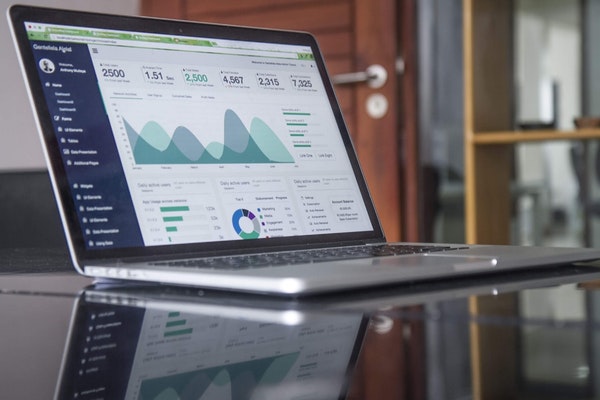 Data analytics is a key component for any company’s success, and it has set down deep roots in the field of marketing. After all, if you can’t measure it, you can’t optimize it.
Data analytics is a key component for any company’s success, and it has set down deep roots in the field of marketing. After all, if you can’t measure it, you can’t optimize it.
Overall, marketing is so reliant on understanding every possible aspect of consumers’ preferences, tendencies and opinions, that the industry has found a natural attraction to complex analytics, which can often require processing millions of data points in seconds.
As entrenched as it is, the field of analytics is ever-changing as it grows, and marketing has always been a friend of innovation. As such, it’s worth staying on top of the trends that could help your company unlock its potential in the coming year and stay ahead of the curve when it comes to better campaigns and results.
Read on to discover five of the biggest trends coming to marketing analytics in 2020.
Marketing Analytics Drills Down into Specifics
 Despite the increasing popularity of business intelligence and marketing analytics tools, many people and organizations still rely on old standbys like Google Analytics and Facebook Insights. While there is absolutely nothing wrong with these options, the breadth of data these tools offer is limited by their purpose. Moreover, their value to organizations also decreases as the number of factors marketers must consider with every campaign continue to expand.
Despite the increasing popularity of business intelligence and marketing analytics tools, many people and organizations still rely on old standbys like Google Analytics and Facebook Insights. While there is absolutely nothing wrong with these options, the breadth of data these tools offer is limited by their purpose. Moreover, their value to organizations also decreases as the number of factors marketers must consider with every campaign continue to expand.
More data articles from theMarketingblog >>>>>
With the amount of pre- and post-sale marketing metrics involved—from cart abandonment rates to upsell success and repeat purchases—organizations will be forced to adapt and find analytics tools that can bore down into more specific metrics and provide a clearer picture of campaigns’ success.
Indeed, a large number of marketers already count business intelligence as a critical tool for achieving operational success. In 2020, look for analytics budgets to expand and new BI tools to be deployed.
Business Metrics and Marketing Engagement Get Reacquainted
 Sales and marketing are inexorably tied together—the latter is the fuel that drives the former. However, the data interaction between the two is usually a one-way street.
Sales and marketing are inexorably tied together—the latter is the fuel that drives the former. However, the data interaction between the two is usually a one-way street.
Marketing creates leads that generate sales. However, both are vital for the other’s effectiveness, and maintaining departments (and data) siloed means that organizations are not realizing their full potential.
Moreover, organizational sales data is vital for understanding how well marketing campaigns are functioning.
2020 will set the stage for a larger shift to consolidate sales and marketing analytics under a single roof, with platforms providing a more holistic look at revenue streams and how marketing campaigns affect them.
Platforms like Kajabi, which helps solopreneurs to market and sell their own digital products like courses and subscription communities, are becoming all-in-one centers that offer better analytics based on hard data. The ability to compare subscription metrics, email campaigns, and other marketing efforts to actual sales and mash the data up presents a more accurate perspective on revenues.
Ethical Data Collection Becomes Central
2019 was a momentous year for data and user privacy, with several national governments implementing stiffer regulations for companies which collect user data. The sheer number of public and embarrassing data breaches brought one of the biggest problems with data collection to the forefront, and public outcry along with official concern led to a major adjustment in the manner companies can gather data about their users.
Regulations like GDPR, the California Consumer Privacy Act, and others are not the death-knell for marketing analytics that some claimed it would be, but it does change the rules of the game.
Companies will have to be significantly more careful about what data they collect and how they employ it.
Additionally, the private sector should continue to distance itself somewhat from tools like Facebook by striving to capture and process their own analytics. By prioritizing ethical data collection and user privacy, marketers will be able to foster greater trust in their campaigns.
Multi-Channel Goes Mainstream
 It’s not that companies aren’t already using multiple channels to market themselves. The issue until now has been a severe lack of focus and coordination.
It’s not that companies aren’t already using multiple channels to market themselves. The issue until now has been a severe lack of focus and coordination.
Indeed, while most companies use a variety of channels, it’s only a minority that coordinates them in unified campaigns. The issue is that simply blasting out marketing across every channel is not a wholly effective approach, despite the efficacy of organized multi-channel experiences.
With 2020 comes a greater emphasis on crafting coherent and complementary marketing tools that take advantage of multiple channels. Today’s marketers are so dependent on multiple channels to acquire customers that even free platforms like Google Analytics now offer tools that can help visualize and optimize multi-channel impact.
Given that improvements in marketing analytics enable more comprehensive campaign projections while concurrently enabling quicker data processing, multi-channel marketing will invariably become an increasingly powerful tool in the approaching year. As we understand the value of each stream better, it will be simpler to implement smarter campaigns.
Predictive Analysis Takes a Leap
 Despite the great advances in marketing analytics on a day-to-day level, perhaps one of the most exciting things to come out of 2019 is the rapid advancements in artificial intelligence and machine learning tools.
Despite the great advances in marketing analytics on a day-to-day level, perhaps one of the most exciting things to come out of 2019 is the rapid advancements in artificial intelligence and machine learning tools.
When combined with analytics, AI and ML help companies harness their data in new ways by expediting the parsing and organization process, automating menial analysis tasks, and even performing analyses for forward projections.
Predictive analysis will be one of the most benefited functions from this innovation, as real-time data is analyzed significantly faster.
Instead of having to wait for manual analysis, AI and machine learning tools can automatically search for relevant data points among massive sets, while avoiding white noise that may slow down or impair human researchers. As predictive analytics progresses, marketing campaigns will swiftly respond to changing trends instead of playing catch-up.
Interesting Times Ahead
Marketing analytics is constantly evolving, and new technology continues to push the limits of what it can achieve. By staying on top of these trends, you can put your company on more solid footing to start the year all while build and deploying a marketing strategy that drives real results for your business.
…………………………………………………………….
New : “More new business from quality articles in theMarketingblog” – TheMarketingblog https://t.co/ieLzfh9plw pic.twitter.com/4Y4vohClJp
— Will Corry (@slievemore) January 13, 2020


